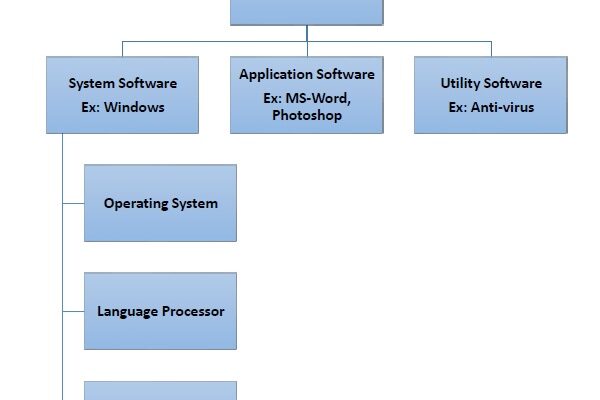About the Article
This article provides a comprehensive overview of the evolving landscape of software in the modern digital age, exploring its foundational principles, development methodologies, key categories, and its profound impact on both personal and professional spheres. With technology advancing at an unprecedented pace, understanding software—its nature, applications, and implications—has become essential not only for developers and IT professionals but also for entrepreneurs, business managers, educators, and everyday users. This article serves as an informative guide, whether you are a novice looking to understand basic concepts or a seasoned professional seeking insights into current trends and best practices.
Purpose and Scope
The primary aim of this article is to demystify software—what it is, how it works, and why it matters. By diving into the different types of software (system software, application software, and development software), we establish a framework for readers to understand the technology that underpins virtually every digital interaction today. From operating systems like Windows and macOS to productivity tools like Microsoft Office and Google Workspace, and all the way to sophisticated development environments and cloud-based platforms, software is at the heart of digital transformation.
This article also explores the software development lifecycle (SDLC), including methodologies such as Agile, Scrum, and DevOps, which have reshaped how modern teams collaborate and deliver products. Understanding these methodologies offers valuable insights into how software is conceptualized, built, tested, and deployed.
Who This Article Is For
While the article touches on technical topics, it is written in accessible language, making it ideal for a wide audience:
- Business professionals seeking to adopt or manage software solutions
- Students and educators in computer science or information technology fields
- Startups and entrepreneurs looking to build or invest in software products
- Developers and IT project managers aiming to stay current with industry standards
- Curious readers who want to understand how software influences everyday life
Key Topics Covered
- Definition and History of Software
- The article begins by defining software in clear terms, distinguishing it from hardware, and discussing its evolution from early machine-level programming to today’s AI-driven applications.
- Types of Software
- System software: Operating systems, drivers, and utilities
- Application software: Productivity tools, multimedia programs, mobile apps, and enterprise systems
- Development software: IDEs (Integrated Development Environments), compilers, debuggers, and version control tools
- Software Development Lifecycle (SDLC)
- This section outlines the various stages involved in developing software—from planning and analysis to design, coding, testing, deployment, and maintenance.
- It compares traditional waterfall methods with modern Agile practices and explains the benefits of iterative, user-focused development.
- Agile, DevOps, and CI/CD
- The article delves into contemporary practices like Agile methodology, Continuous Integration/Continuous Deployment (CI/CD), and the DevOps culture that encourages collaboration between development and operations teams.
- Open Source vs. Proprietary Software
- We examine the pros and cons of each, discussing licensing models, community support, cost implications, and customization possibilities.
- Cloud Software and SaaS
- With the rise of cloud computing, the article explains the shift from traditional software installation to cloud-hosted platforms and services (e.g., SaaS, PaaS, IaaS), with examples like Salesforce, AWS, and Microsoft Azure.
- Security and Ethical Considerations
- No software discussion is complete without addressing cybersecurity, data privacy, and the ethical responsibilities of developers and companies. The article highlights key risks and best practices for secure development.
- Artificial Intelligence and Software Automation
- The piece also explores how AI is transforming software development itself—through automated code generation, intelligent testing, and smarter user experiences.
- Trends and Future Directions
- Finally, the article looks at where software is heading, touching on topics such as low-code/no-code platforms, edge computing, quantum software, and the expanding role of AI.
Why This Article Matters
Software is no longer a niche topic reserved for engineers—it permeates every facet of modern life. From mobile apps that help us stay organized to enterprise systems that drive global supply chains, software is a silent yet powerful force shaping how we live and work. This article brings clarity to that reality, showing readers that understanding software isn’t just helpful—it’s essential.
In business, choosing the right software can mean the difference between scaling efficiently and falling behind. In education, teaching modern tools prepares students for success in a rapidly digitizing workforce. For developers and engineers, staying current means remaining competitive in a constantly evolving job market. And for consumers, understanding how software works helps make better choices about digital tools, privacy, and digital citizenship.
Author’s Perspective
The author brings a multidisciplinary approach to this article, combining experience in technology, business strategy, and digital transformation. With a passion for making complex topics understandable, the writing is designed to inform, inspire, and empower. The content is thoroughly researched, drawing from credible sources including industry publications, whitepapers, and real-world case studies to ensure accuracy and relevance.
Conclusion
This article stands as both a primer and a roadmap for understanding software in 2025 and beyond. Whether you’re building the next big app, choosing tools to streamline your operations, or simply trying to keep up with digital trends, the insights presented here will help you make informed decisions. In a world where “software is eating the world,” as venture capitalist Marc Andreessen famously said, this article equips you to not only survive—but thrive—in a software-driven era.



